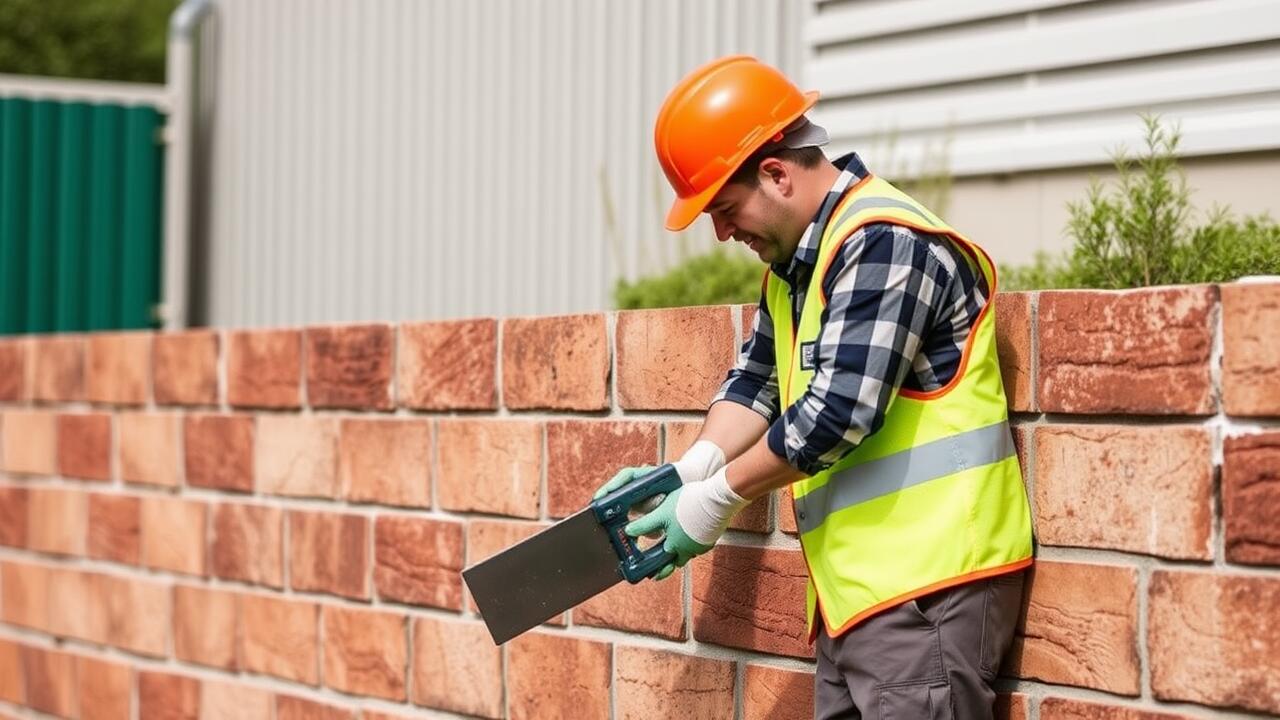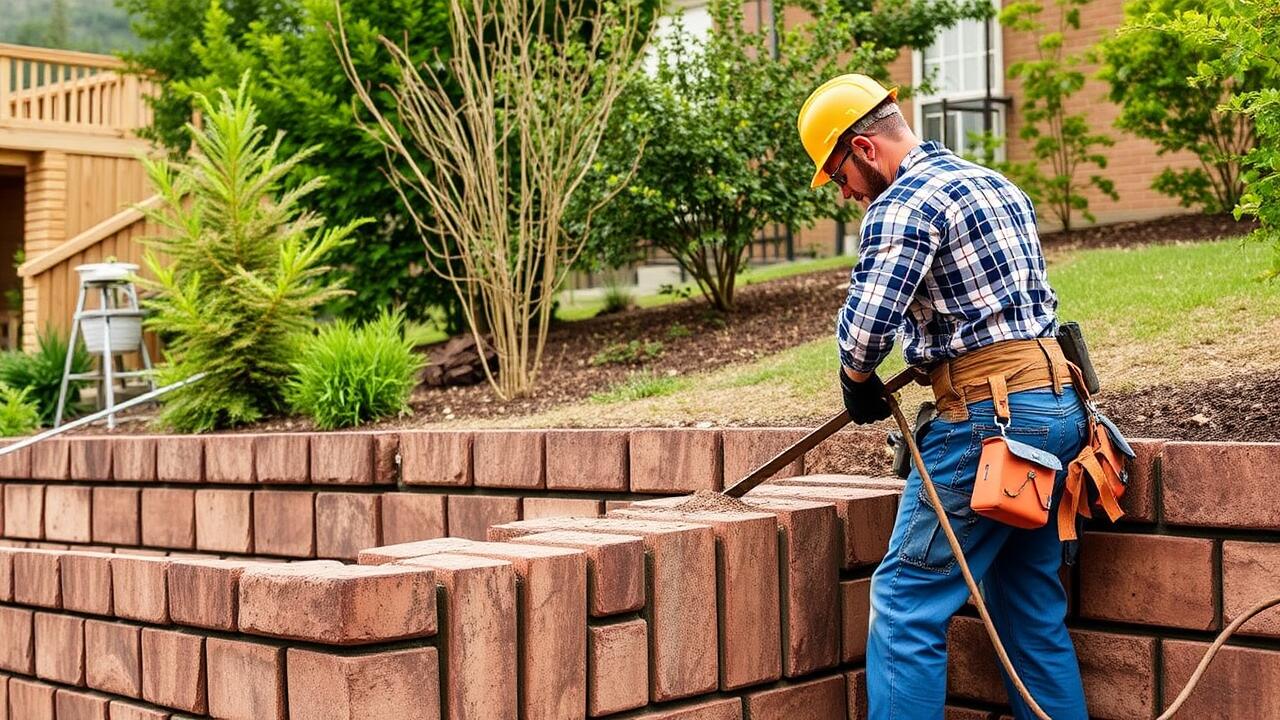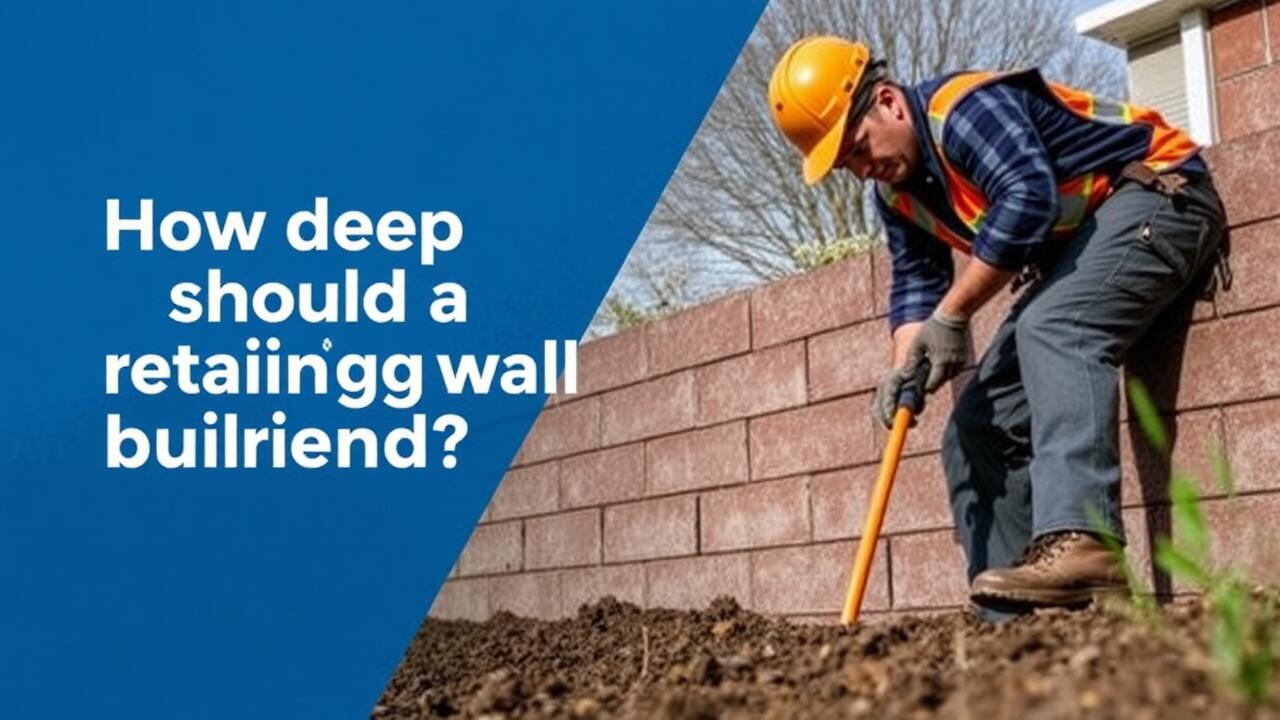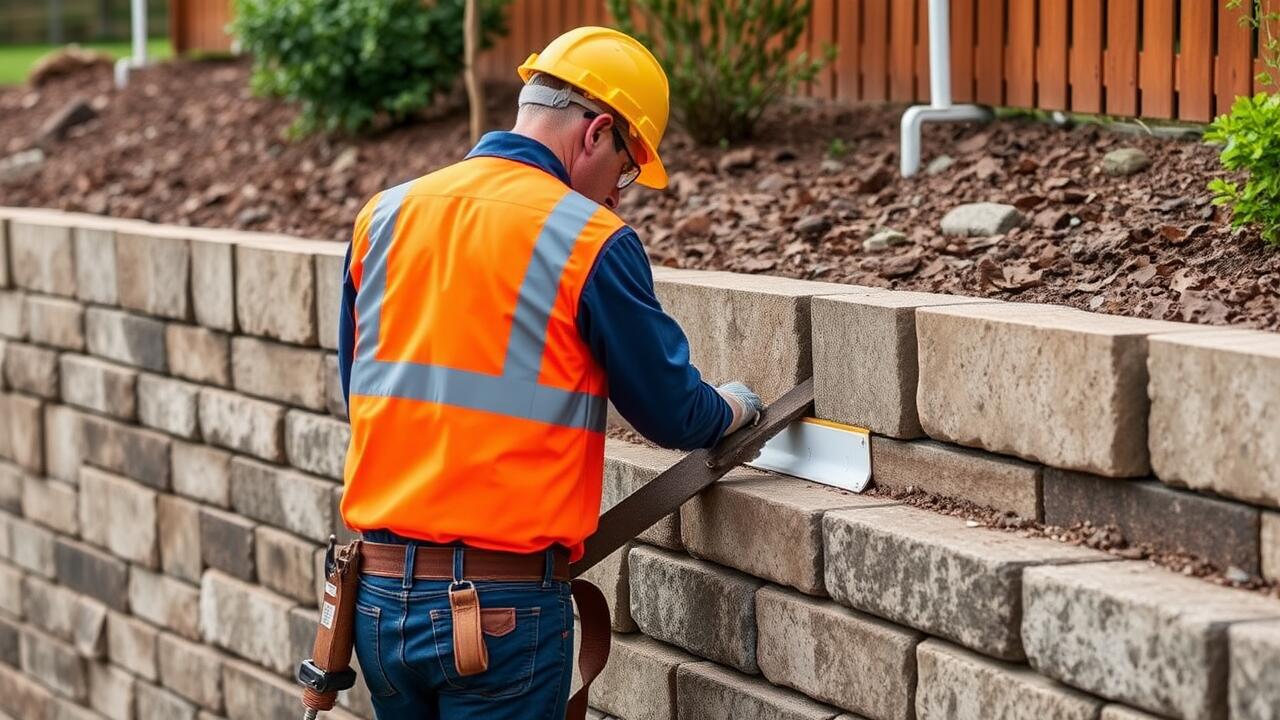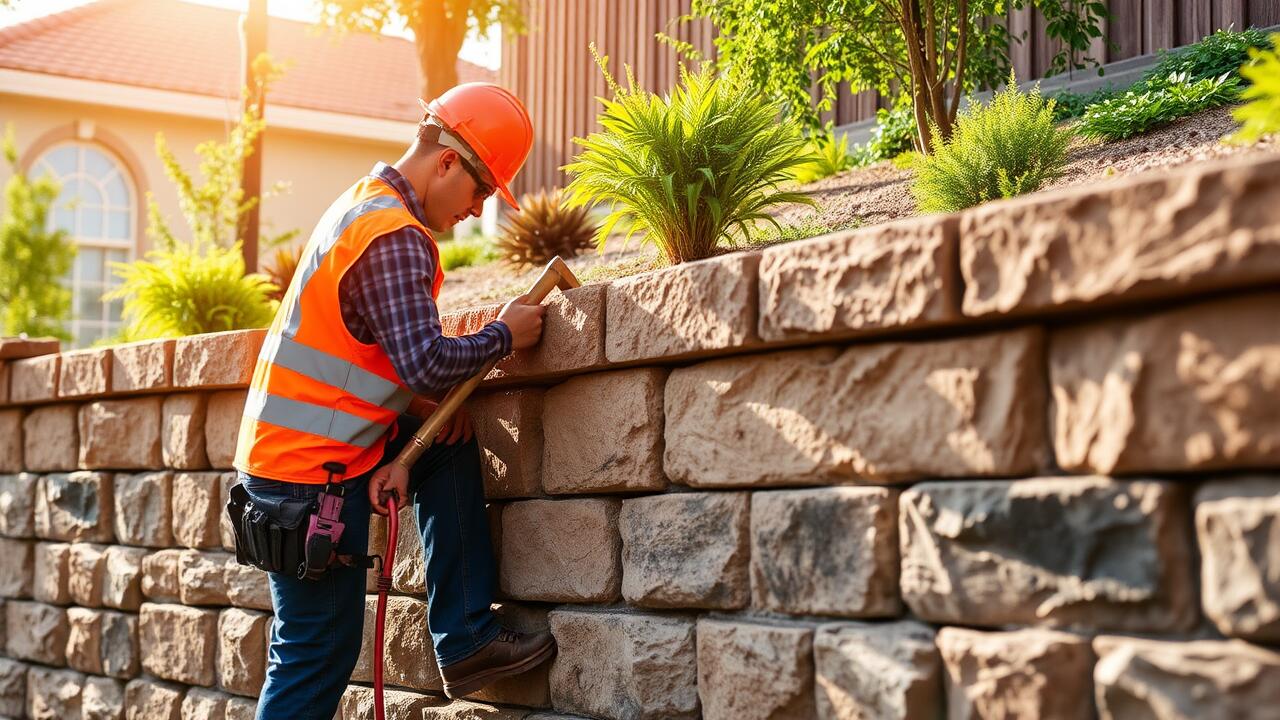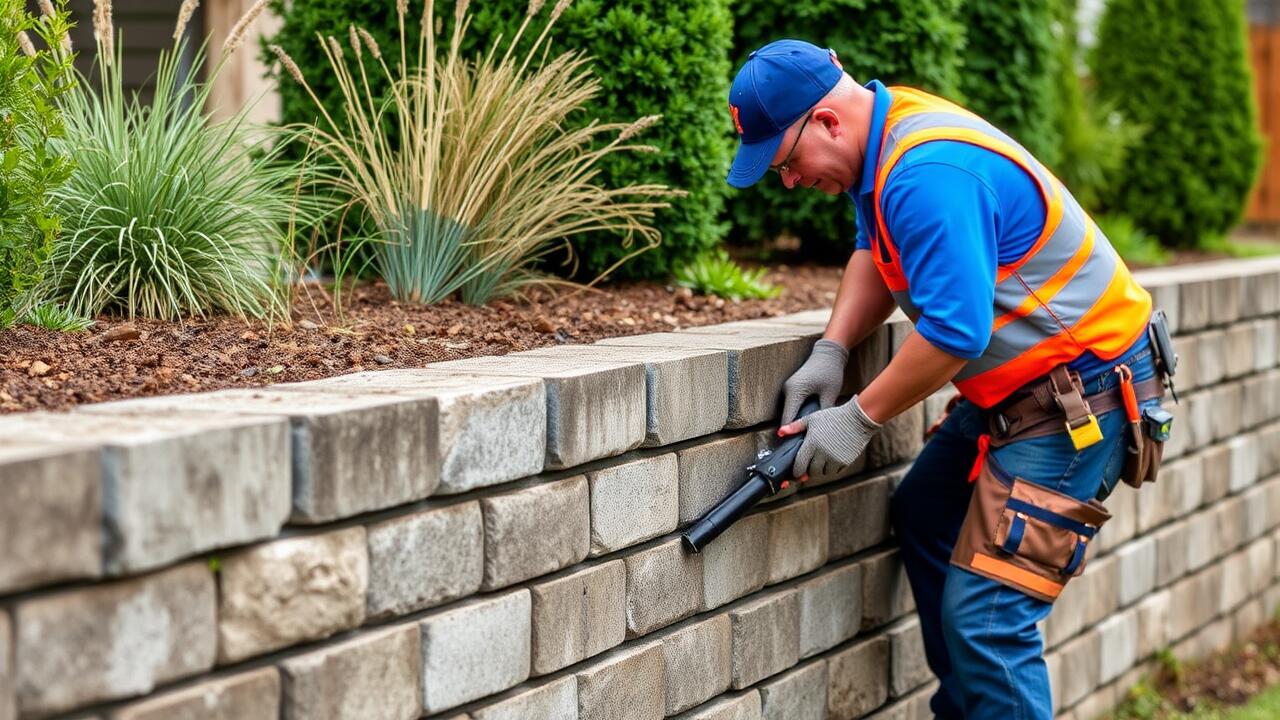
Gravity Retaining Walls
Gravity retaining walls use their weight to resist lateral pressure from soil. These structures are typically made from materials like concrete, stone, or masonry. Because they are designed to rely on gravity, they are generally thicker at the base and taper off towards the top. This shape helps distribute weight effectively and provides structural stability. The cost of gravity retaining walls primarily depends on the materials used and the height of the wall, making them a budget-friendly option for many landscaping projects.
Retaining Wall Installation in residential or commercial properties can be straightforward, particularly for shorter walls. However, the site preparation and drainage considerations are crucial for optimal performance. A well-designed gravity wall can last for several decades with minimal maintenance, provided it's constructed properly. Investing in quality materials ensures that the wall remains stable and effective over time. Overall, gravity retaining walls offer a practical solution that balances cost, function, and longevity.
Construction Techniques and Expenses
Constructing a gravity retaining wall involves using heavy materials like stone or concrete to rely on their mass for stability. A proper foundation is crucial, with excavation often necessary to reach solid soil. These walls typically don't require extensive reinforcement, which can help keep costs down. However, the need for a robust base means that labor and machinery expenses can add up, particularly in areas with challenging soil conditions.
Steel retaining walls are an alternative that can be both cost-effective and efficient. This method utilizes steel sheets driven into the ground, allowing for quick installation and reduced excavation costs. The durability of steel can lead to longer-term savings on maintenance. Choosing the right type of steel and protection against rust will affect the upfront investment. Local regulations can also impact the overall expenses in retaining wall installation in various regions.
Steel Retaining Walls
Steel retaining walls offer a robust solution for various landscaping and structural needs. Their durable construction makes them suitable for high-load applications and challenging terrains. When comparing costs with other types of retaining walls, steel options typically present a balance between initial investment and long-term durability. The installation process is generally straightforward, which can reduce labor costs, contributing to overall savings.
Retaining wall installation in steel often requires less excavation compared to heavier materials like concrete or stone. The lightweight nature of steel allows for easier handling and quicker setup on site. Additionally, the longevity of steel walls, especially when treated to resist corrosion, means they can outlast other materials, offsetting initial expenses with minimal maintenance needs over time.
Cost Comparison and Longevity
Steel retaining walls often present a cost-effective solution for various landscaping needs. Material prices for steel tend to be lower than those for natural stone or concrete. Additionally, the installation process can be quicker, which may reduce labor costs. The longevity of steel walls, when treated or coated, can match that of traditional materials, particularly in areas with minimal moisture exposure. Maintenance requirements can impact overall expenses, but many steel systems are designed to withstand the elements effectively.
When considering retaining wall installation in regions with harsh climates, the longevity of materials becomes a critical factor. Although steel offers durability, other options like concrete may provide better resistance to weathering over time. Evaluating the long-term costs includes factoring in the potential need for repairs or replacements. Understanding local conditions and specific site requirements is essential in making an informed choice that balances initial investment with future maintenance needs.
Stone Retaining Walls
Stone retaining walls are often chosen for their natural beauty and durability. Available in various types, including fieldstone, limestone, and granite, these walls can enhance the landscape while providing necessary support for soil. The aesthetic appeal aligns with a rustic or refined look, allowing homeowners to select stones that complement their existing architecture. However, the initial cost tends to be higher compared to other wall types, requiring careful budgeting.
Retaining wall installation in challenging terrains can also influence costs, as the construction process may demand additional labor and materials. Proper drainage is crucial for longevity, and this may lead to increased expenses if not initially addressed. While stone walls offer a long-term solution and blend seamlessly with nature, it’s important for homeowners to weigh the upfront costs against the advantages they provide over time.
Aesthetic Appeal vs. Price
Stone retaining walls are often appreciated for their natural beauty and elegance. The use of stone can create a rustic or refined look, depending on the choice of materials and design. Homeowners may find that such aesthetic appeal enhances the overall value of their property. However, the cost of sourcing, transporting, and installing stone can quickly add up.
Retaining Wall Installation in this manner typically necessitates skilled labor, as proper construction techniques are essential to ensure stability and longevity. This can further inflate the overall project cost. Despite the initial expense, many still consider the investment worthwhile for the timeless appearance and the potential increase in property value that a stone retaining wall can offer.
FAQS
What is a gravity retaining wall?
A gravity retaining wall is a type of wall that relies on its own weight to hold back soil. These walls are typically made from heavy materials like concrete or stone and require minimal additional support.
Which type of retaining wall is the most cost-effective?
Gravity retaining walls are generally considered the most cost-effective option due to their simple design, low material costs, and minimal construction requirements.
How do steel retaining walls compare in cost to other types?
Steel retaining walls can be more expensive upfront than gravity walls, but they may offer longer durability and lower maintenance costs over time, making them a viable option depending on the specific project needs.
Are there any aesthetic benefits to stone retaining walls?
Yes, stone retaining walls provide a natural and aesthetically pleasing look, enhancing the landscape. However, they tend to be more expensive than other types of retaining walls due to material and labor costs.
What factors should I consider when choosing a retaining wall type?
When choosing a retaining wall type, consider factors such as budget, intended use, aesthetic preferences, soil conditions, and the height of the wall needed for effective soil retention.
